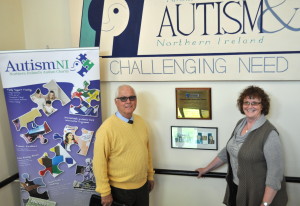 Irish Chamber Vice President, Tom McCool, will be presenting at an international conference on applied behavior analysis on the credentialing of behavior therapists in Paris.
Irish Chamber Vice President, Tom McCool, will be presenting at an international conference on applied behavior analysis on the credentialing of behavior therapists in Paris.
Qualified Applied Behavior Analysis (QABA) Behavior Technician Credentialing: The Road to Quality Autism Services
Wednesday, November 15, 2017
9:00 AM–9:50 AM
Forum GHIJ, Niveau 1
Area: AUT/EDC; Domain: Service Delivery
Chair: Thomas McCool (QABA Credentialing Board)
THOMAS MCCOOL (QABA Credentialing Board)
Abstract: No one is surprised that pharmacy technicians, EKG technicians, clinical medical assistants, patient care technicians, and a host of others in the workforce must adhere to basic qualifications and be licensed or certified as a demonstration that at least minimum level skills are in place. In 2012, no such standardized system of accountability applied to the applied behavior analysis paraprofessional, also known as a behavior technician. Unofficial survey results estimated that more than 80% of direct behavioral services were being provided by unlicensed, uncertified personnel. The fact that the services were being overseen by licensed or certified professionals appeared to be an acceptable level of oversight for these services. As the need for ABA services continues to grow exponentially the sector was forced to reassess this particular workforce and examine whether the behavior technician should be included in the growing list of allied healthcare professionals. Although there have been several job analyses on the behavioral health paraprofessional workforce including the direct support professional workforce supporting those individuals with a wide-range of intellectual and developmental disabilities, the Qualified Applied Behavior Analysis Credentialing Board (QABA) completed a comprehensive job analysis specifically looking at the paraprofessional role in providing applied behavior analysis treatment and support to individuals diagnosed with Autism Spectrum Disorder. In conducting the study, the Task Team chose methods that adhered to established standards in conducting a job analysis study. These principles and procedures are clearly outlined in the US federal regulation (Uniform Guidelines on Employee Selection Procedures) and those of the American National Standards Institute (ANSI). The job analysis consisted of the following steps: 1. Initial Development and Validation 2. Validation Study 3. Development of Competency Areas 4. Validation of Competency Areas. This panel will review the process, results, and potential outcomes of this analysis.

